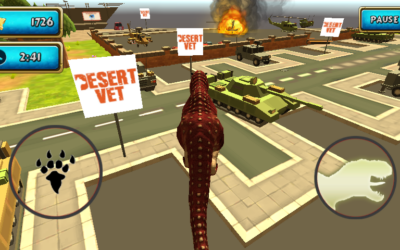Not Just a Game Anymore: Can NFT enabled Play-To-Earn Games transform the Landscape of Work and Play?

To say that the emergence of NFT technology has been a point of contention of late would be selling the story short; you’d be hard-pressed to find anyone without a strong opinion on the topic.
It’s a simple idea in principle: NFTs are essentially title deeds made of code, forged on the blockchain, granting legal ownership of digital assets to whoever purchases them. But mighty oaks from tiny acorns grow, and it didn’t take long for this simple idea to be applied to a range of different ventures, some more virtuous than others.
One high profile use case has been NFTs for the digital art world. A number of artists started to sell their work as NFTs, and buyers, largely viewing the purchase as an investment akin to cryptocurrency, bought them. The crowning moment of this trend came with the record-breaking sale of Everydays: The First 5000 Days, a digital collage by artist Beeple, which sold for over 69 million dollars as an NFT. This, naturally, was big news in the art world, and many praised NFTs as an answer to some of the tricky questions digital artists have been trying to solve for years, specifically questions around ownership of digital art. Others, however, saw the opposite edge of the sword, and criticised the technology for its environmental impact.
Cryptocurrency is ‘mined’ by setting up powerful PCs to do so automatically, a process which consumes both a huge amount of electricity (more than the entirety of Argentina, and rising, according to the BBC) and a lot of high-end PC components. The question of whether these practices are sustainable can be answered with a fairly definitive ‘No.’, at least in their current state, leaving the question of whether they’re worth using despite the drawbacks as the main consideration on the table.
PG Connects Digital #7 showcased the current NFT scene in gaming, in all of its complex glory, with a series of talks and panels dedicated to the subject.
Gabby Dizon, Co-Founder of Yield Guild Games, had a particularly interesting take on the topic, discussing the potential of the emergingPlay-to-Earn’ model, through the lens of the explosively popular Axie Infinity. Play To Earn (PTE) is a new approach to a payment model for games, not so much an evolution of the previous P2P/F2P models as it is a complete reinvention; Play-to-Earn games offer what is essentially a paid job to their players, allowing them to earn digital assets with real-world monetary value as they play. These assets are enabled by NFT technology, and stored on the blockchain.
This idea in itself is not technically new; players have been able to earn digital objects with real-world value since 2002 in Magic: The Gathering Online, for example, but the introduction of NFT technology makes it notably easier to implement and maintain rather than creating a bespoke system for every individual game. The structures and services that have sprung up around this kind of game are also new, and interesting, no matter your stance in the NFT debate.
Yield Guild Games is a Player Guild for Play-to-Earn games. While you can earn money in PTE games, you have to spend it to make it; you’ll need to purchase some in-game assets for real money in order to compete in the game, with the average price for a strong start in Axie Infinity somewhere around $1,000, making Pay-to-Play-to-Earn a more suitable moniker. Player Guilds purchase NFTs for different PTE games, then lend them to players so that they can get started with the game. Yield Guild also offers scholarships to players, which include coaching from the guild’s Community Leaders, that help players improve their skills in the game.
These services combine to offer more people access to PTE games, in terms of both money and skill. The result of this is that many people have been able to make more money playing Axie Infinity than they would have working a normal job. This was particularly true among rural farming communities in the Philippines, whose livelihoods were devastated by the disruption of the pandemic, but managed to find a way out thanks to Axie Infinity.
The sheer scale of this new format for games, and the potential it has, can be overwhelming, as it’s so far removed from anything we’ve seen in the past. The idea of people taking out loans, to buy digital assets, to play games, to earn money sounds far-fetched, but it’s happening, and Yield Guild are confident it’s here to stay. In fact, Dizon went so far as to claim that “Jobs in the Metaverse are the future of work.” referring to the broader world of interlinked PTE games/experiences he believes will exist in the future.
At first glance this whole enterprise sounds like a net positive; new opportunities for those struggling to find employment, and accessible ones at that, once a company like Yield Guild has covered the otherwise prohibitively high entry cost.
However, while Yield Guild may have supported those in need during the pandemic, they, and other Player Guilds like them, are now in a position of social power; their future actions and decisions will affect not just their own bottom line, but also the lives of individual players, indeed citizens, some of whom may now be fully dependent on PTE games to survive.
Time will tell whether Play-To-Earn turns out to be another NFT fad, glinting briefly in the spotlight like the digital art boom did, or if it will provide the future of work that Dizon predicts. Whichever way things pan out, however, one thing’s for certain: for the guild owners, developers, and especially the players involved, it’s not just a game anymore.
More…
AdinMo vs. The Status Quo – Why Dynamic In-game Ads are the Future
When traditional digital advertising formats such as video and banner ads first became available within mobile apps, they were seen as game-changers. Giving users the capacity to interact directly with ads via clickthrough and, crucially, giving advertisers the...
The Observer Effect – How Clicks Changed Advertising
In physics, the Observer Effect theory tells us that observing a phenomenon necessarily and inevitably causes that phenomenon to change. This most commonly refers to instruments of measurement interfering with the results of an experiment. In advertising, the ways...
How Dynamic In-Game Ads Change the Game
Introduction The value of native advertising lies in its adaptation of tradition. These ads bring the strengths of traditional (and more impactful) advertising formats to game worlds populated exclusively by standard digital formats. Billboards, posters and shop...




